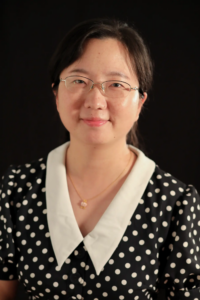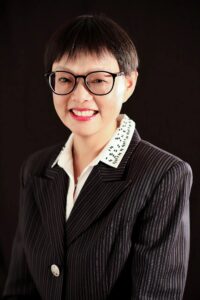Customer discovery shows Baby Hat a need for new service, larger market

Dr. Sibei Xia
Four weeks and a little over halfway through the I-Corps national program’s customer discovery interviews, Team Baby Hat faced a critical decision: add a breathing monitor to the “smart” knit caps that track a baby’s temperature or abandon the business.
“At the very beginning, we were not confident that we could finish the 100 prospective customer interviews the program requires. But we were confident in our technology,” said Yanbo Zhang, a PhD student in LSU’s Department of Textiles, Apparel Design, and Merchandising and Baby Hat’s entrepreneurial lead. “But after 50 or 60 interviews, that totally changed.”

Yanbo Zhang
Team members now knew they could hit the mandatory interview mark. But they had begun questioning their technology.
Baby Hat is a cap knitted with thermochromic yarn that changes color when a baby’s temperature climbs to the fever threshold, 99.5 degrees Fahrenheit or 37.5 degrees Celsius. The team had already completed regional I-Corps training before tackling the national program. The regional program’s customer discovery process helped persuade the team to shift its target market from hospitals to parents ̶ moms really. The national I-Corps interviews uncovered new information: moms (and dads and grandparents) worried more about whether their babies might stop breathing than if they spiked a fever.
It was time to consider the dreaded “P word”: pivoting.

Dr. Chuanlan Liu
“Our instructors had already urged us to move outside our comfort zone. They regularly challenged our assumptions about our business model,” said Chuanlan Liu, LSU professor of retailing and consumer behavior and co-inventor of Baby Hat. “They also told us to always keep an open mind.”
A flexible mindset was vital because the interview results pushed Team Baby Hat so far past comfort that it wasn’t even a speck in the rearview mirror. If the team wanted to move forward, the startup would have to figure out how to add breath monitoring technology. The team didn’t know if the technology existed and if it did, how to adapt it to their smart caps.
With the guidance of its industry mentor, Shannon Collins, COO of Lightwork Enterprise, Team Baby Hat kept interviewing prospective customers. The discussions uncovered problems with existing baby monitors, and those issues revealed a clear direction for the startup. Unlike Team Baby Hat’s caps, baby monitors didn’t always stay connected. Sometimes the monitors slip off the crib. Sometimes babies accidentally kick the devices to the floor. There are frequent false alerts.
Baby Hat’s caps didn’t have those drawbacks. The team just had to find a way to add a breathing monitor. The startup could move forward.
“Finally, we were on track. There was a more promising market,” said Sibei Xia, assistant professor in LSU’s Department of Textiles, Apparel Design, and Merchandising and co-inventor of Baby Hat.
The team is now researching which potential partners offer the best breath monitoring solution.
Liu said I-Corps changed more than Team Baby Hat’s business model. The training also altered the way she thinks about research. Now rather than finding the answer to a question, she also looks at whether the discovery might have commercial applications.
“I-Corps helps innovators whose technology solves a problem to get that solution into the market,” Liu said. “At the same time, the program buffers participants from real-world risk. If a startup fails during I-Corps, the entrepreneur doesn’t lose years of work and their investment. I definitely think this is a wonderful program.”








